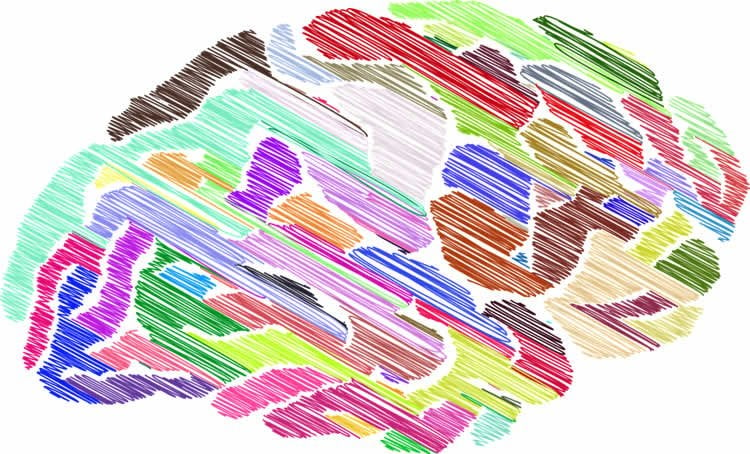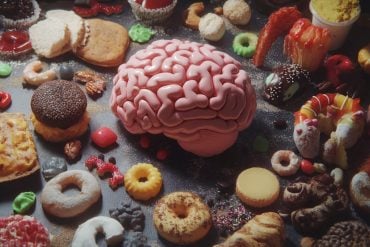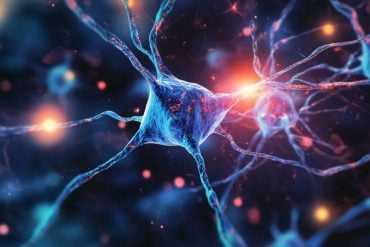Summary: Nocebo effect becomes more pronounced over time when people believe they are exposed to a more expensive medication, researchers report.
Source: AAAS.
People receiving an inert treatment believed they experienced more severe adverse side effects when the dummy drug was labeled as expensive, scientists report.
The researchers say brain regions responsible for higher-order cognition can influence primal pain sensing at the spinal level.
To study the neurological causes for the so-called nocebo effect (where people in clinical trials sometimes report negative side effects even though they received inactive substances), Alexandra Tinnermann and colleagues developed a new functional magnetic resonance imaging (fMRI) method for simultaneous activity measurements in the entire central pain system throughout the cortex, brainstem, and spinal cord.
For the nocebo treatment, the scientists enrolled 49 people in a trial for a supposed anti-itch cream that, in reality, contained no active ingredients.
All participants were told that increased pain sensitivity was a potential side effect for the inert cream, but some were informed that they were receiving an expensive ointment and others were led to believe that the lotion was cheap (the scientists even created two different packages for the balms, indicating high or low price).
People treated with the “expensive” cream reported greater sensitivity on a heat-tolerance test, and the nocebo effects became more pronounced over time.

The researchers identified portions of the spinal cord that became activated during nocebo effect pain, and determined that altered sensations due to perceived price were associated with differences in two brain regions – the periaqueductal gray and the rostral anterior cingulate cortex.
A related Perspective by Luana Colloca gives additional examples where patients’ expectations alter placebo (positive) or nocebo effects, advocating for more research into the physiology underlying these phenomena for better clinical trial design.
Source: AAAS
Image Source: NeuroscienceNews.com image is in the public domain.
Original Research: Abstract for “Interactions between brain and spinal cord mediate value effects in nocebo hyperalgesia” by A. Tinnermann, S. Geuter, C. Sprenger, J. Finsterbusch, C. Büchel in Science. Published online October 5 2017 doi:10.1126/science.aan1221
[cbtabs][cbtab title=”MLA”]AAAS “The High Price of the Nocebo Effect.” NeuroscienceNews. NeuroscienceNews, 5 October 2017.
<https://neurosciencenews.com/nocebo-effect-psychology-7673/>.[/cbtab][cbtab title=”APA”]AAAS (2017, October 5). The High Price of the Nocebo Effect. NeuroscienceNews. Retrieved October 5, 2017 from https://neurosciencenews.com/nocebo-effect-psychology-7673/[/cbtab][cbtab title=”Chicago”]AAAS “The High Price of the Nocebo Effect.” https://neurosciencenews.com/nocebo-effect-psychology-7673/ (accessed October 5, 2017).[/cbtab][/cbtabs]
Abstract
Interactions between brain and spinal cord mediate value effects in nocebo hyperalgesia
Value information about a drug, such as the price tag, can strongly affect its therapeutic effect. We discovered that value information influences adverse treatment outcomes in humans even in the absence of an active substance. Labeling an inert treatment as expensive medication led to stronger nocebo hyperalgesia than labeling it as cheap medication. This effect was mediated by neural interactions between cortex, brainstem, and spinal cord. In particular, activity in the prefrontal cortex mediated the effect of value on nocebo hyperalgesia. Value furthermore modulated coupling between prefrontal areas, brainstem, and spinal cord, which might represent a flexible mechanism through which higher-cognitive representations, such as value, can modulate early pain processing.
“Interactions between brain and spinal cord mediate value effects in nocebo hyperalgesia” by A. Tinnermann, S. Geuter, C. Sprenger, J. Finsterbusch, C. Büchel in Science. Published online October 5 2017 doi:10.1126/science.aan1221







